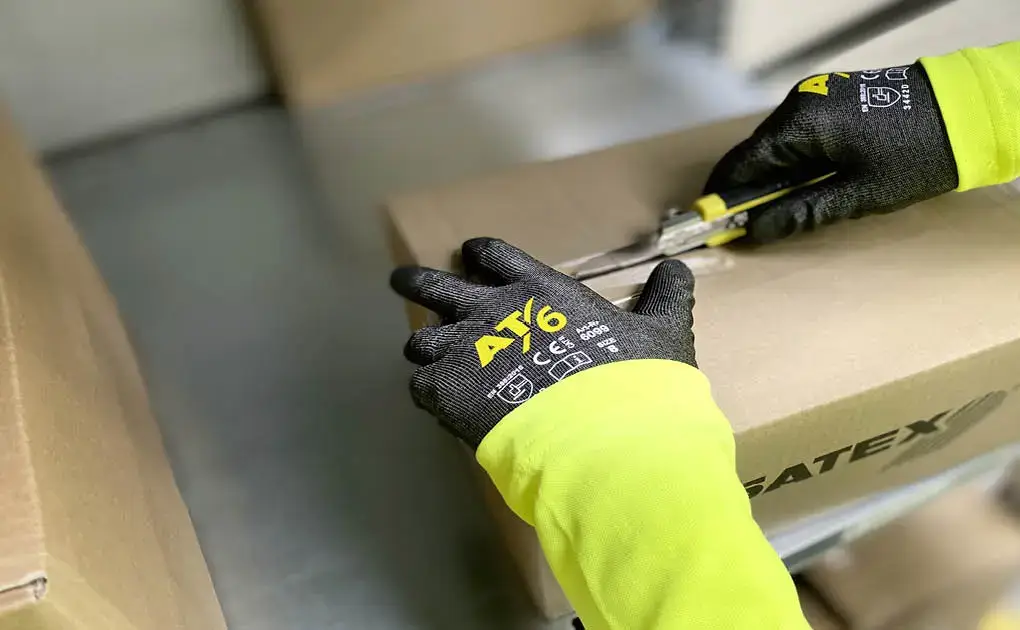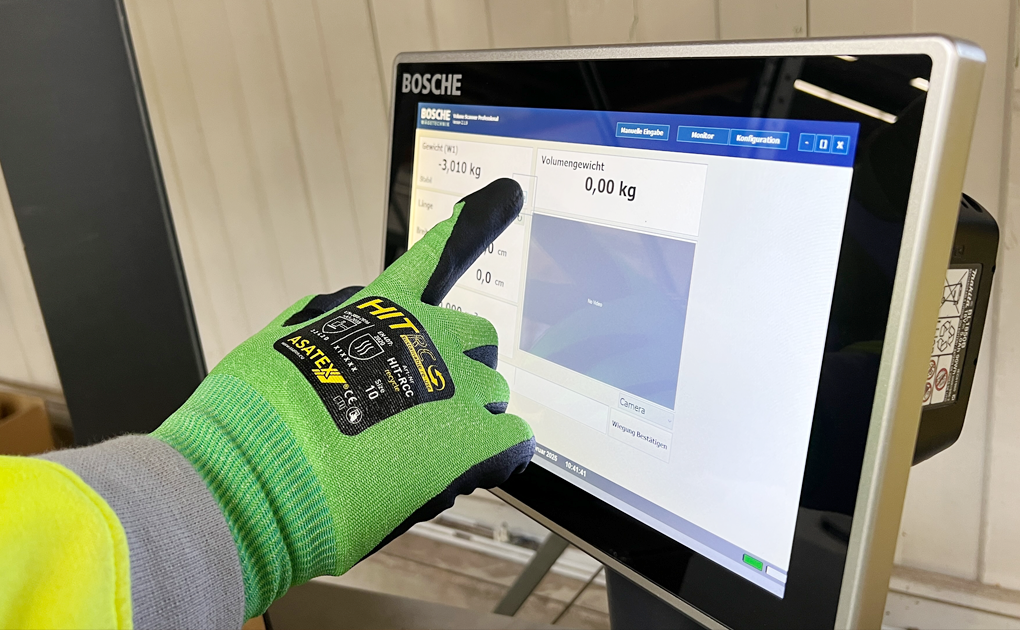
Cut-resistant gloves in everyday working life
Cut protection in the workplace: how to keep your hands safe
Cut injuries are among the most common accidents at work. Hands are particularly at risk, whether in industry, on construction sites or in food production. Cut-resistant gloves offer reliable hand protection, increase safety at work and are indispensable in many industries.
What is cut protection?
Cut protection refers to the protection of hands from injuries caused by sharp tools or materials. Unlike conventional work gloves, cut protection gloves are not made of simple textiles, but of resistant fibres such as Kevlar, HPPE, fibreglass or stainless steel mesh. This significantly reduces the risk of cuts from knives, glass or sheet metal.
The material differences in detail
Kevlar
Kevlar is particularly heat and cut resistant, yet lightweight and flexible, as it is made of highly crystalline para-aramid fibres – a particularly stable plastic made of aromatic polyamides. This makes it ideal for metalworking or working with hot workpieces. However, the material is susceptible to UV light and moisture, which can shorten the service life of the gloves.
HPPE (High Performance Polyethylene)
HPPE impresses with its extremely high cut resistance and low weight. It is breathable and very comfortable to wear, which is why it is often used in the food industry, logistics or assembly work. The only disadvantage is its low heat resistance.
Glass fibre (fibreglass)
Glass fibre is usually combined with other fibres to provide enhanced cut protection without making the glove thick or heavy. This makes it suitable for precision work in the automotive or packaging industries. One potential problem is that damaged glass fibres can cause skin irritation.
Stainless steel mesh / steel fibre
This material offers the highest level of protection against cuts and punctures. Gloves with steel fibres are the first choice in the meat or glass industry, where extremely sharp tools are used. Their disadvantage is that they are heavier and less flexible, which can reduce wearing comfort.
Why cut-resistant gloves are so important
- Accident prevention: Significantly reduce the risk of cut injuries.
- Productivity: People who work safely are more focused and work faster.
- Versatility: There is a suitable level of protection for every industry.
Protection classes according to EN 388 – finding the right choice
There are clear standards to ensure that everyone can find the right glove. The EN 388 standard distinguishes between different protection classes:
- Class A-B: light cut protection for assembly or packaging
- Class C-D: medium protection for construction, metal or wood processing
- Class E-F: maximum protection for the glass, sheet metal or meat industry
The respective protection class is marked directly on the glove – usually on the back of the hand or on the inside label. There you will find the EN 388 pictogram (a shield symbol), followed by the test values for abrasion, cut, tear and puncture resistance.

Cut protection with touch function – safety meets the digital world of work
Modern workplaces have long been digital: machines are controlled via tablets, warehouse logistics are managed by scanners, and construction plans appear on smartphones. To save you from having to constantly take off your gloves, cut protection gloves with integrated touch function are now available.
These special models combine certified cut protection with conductive materials in the fingertips. This allows you to operate displays and mobile devices without compromising on safety or comfort.
Conclusion
With the right cut protection gloves, you minimise the risk of injury, increase work safety and create optimal working conditions at the same time. Investing in high-quality hand protection means greater safety, health and efficiency for your employees.
At ASATEX, you will find a wide selection of cut-resistant gloves in different protection classes and materials – suitable for every industry and every area of application. Check now which protection class is required for your work and ensure that safety is literally in good hands.
If you are looking for a suitable glove for your workplace, please visit: https://www.asatex.eu/en/Gloves/
